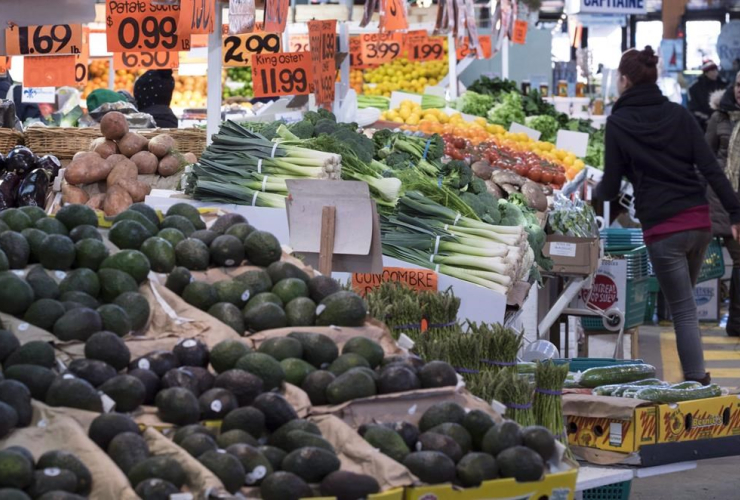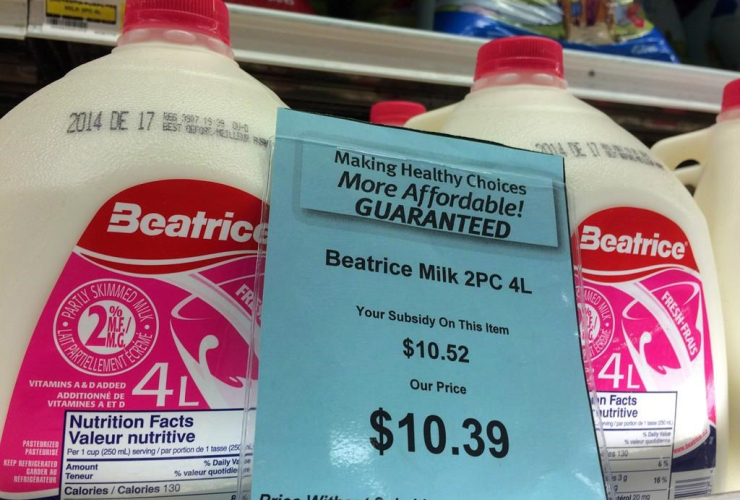As an emergency doctor, I’m all too familiar with the stereotype of hospital food - a tray of flaked potatoes, graying meatloaf, and processed cheese with a side of Jell-O. It's a far cry from the colourful, diverse plate that is the face of the new Canada’s Food Guide. Hospitals can, and are beginning to lead by example in recognizing food as a major ingredient in health both within and beyond their walls.
Common sense, and a wealth of evidence, supports nutritious food as a fundamental part of health and healing. In fact, a recent study found an improved diet could potentially “prevent one in every five deaths globally.” Too much salt, not enough fruits, and too few whole grains are contributing factors in more than half of diet-related deaths.
The revised Canada’s Food Guide takes a big step towards helping us feel better and live longer by showing us how to eat more fresh produce, choose fewer processed foods, and explore easy ways to include more plant-based proteins.
Sadly, this nutrient-rich diet is out of reach for too many Canadians who are facing time or money constraints. According to Statistics Canada, the cost of vegetables rose by more than 14 per cent in the past year.
Food insecurity - the lack of reliable access to enough nutritious food - is very real in our country. It’s both an urban and rural problem and has particularly negative health and social effects on people living with poverty, including the more than one in six children in food-insecure households.
Examples are commonplace in my ER. An elderly man can’t stand because he’s been too isolated to get groceries. A woman (and it is more often women) hasn’t eaten lunch or dinner as she races between jobs and childcare. We see it so frequently, we’re desensitized to it.
But you don’t have to be poor to have a poor diet. Heart disease and type 2 diabetes are familiar results of malnutrition, in old and young, from farmsteads to boardrooms.
‘No pills or surgery will fix a poor diet’
Malnutrition leads to poor wound healing, higher risk of infection, and slower recovery from illness. That means longer hospital stays, higher treatment costs, and a greater risk of dying. Where I work, we can transplant hearts, but no pills or surgery will fix a poor diet.
Solutions to this widespread problem can start within healthcare. Providing tasty, nutritious, and culturally-appropriate meals in hospitals can reduce patient suffering and improve their quality of life. And after patients return home, we also need to support them with health-positive social policies that make Canada’s Food Guide attainable for everyone.
The Nourish initiative is helping set an example by engaging a national network of food service directors and innovators who are passionate about taking local action to bring nutritious, sustainable meals into health institutions.
Nourish innovators in Regina have introduced traditional foods such as Saskatoon berries, bison stew, and bannock on patient menus, to great excitement, after developing recipes in consultation with local Indigenous community members. Meeting patient needs with a broader selection and culturally-appropriate menus can encourage better nutrition and improve the healing experience, which is important to both patients and hospitals.
Elsewhere, Nourish leaders at Halton Healthcare have embraced ‘from scratch cooking,’ producing meals in-house with fresh, local ingredients, and a Montreal hospital is shifting towards serving more plant-based proteins that are better for patients’ health and more sustainable for our planet.
As Canadians, health is a top priority, in order to enjoy the beautiful land we live in and to ensure our children have a vibrant future. By embracing Canada’s Food Guide and supporting it with innovative action and policies, we can promote equitable access to nutritious, sustainable diets. When we recognize that choosing good food is essential to our wellbeing, in a multitude of ways, we can start to build a healthier Canada.
Dr. Edward Xie is a family and emergency physician, who attended the Food for Health Symposium May 15 -16 in Toronto, bringing together health and food stakeholders to explore food in health care innovation across the country.
This is an important
This is an important viewpoint from an "insider". So I hate to bring on the scepticism, BUT, having worked for 38 years as an O R nurse in Vancouver's biggest hospital, I can attest to the times when hospital food was prepared IN-HOUSE, and was replaced by privatized profit-driven companies by a neo-con government. Even the staff avoided it!
We DON'T need any more studies; the latest revised Canada's food guide tells us what we need to know to make nutritional choices. Viewing this issue in light of the big picture demonstrates how all these aspects of our daily life are linked: nutrition, food security, privatization of public services, education, corporate law, etc., etc.
Comfortable Canadians MUST wake up and inform themselves about politics, as it's the politicians who are tasked with making the decisions governing all these issues. And we all know how much industry lobbying goes on, all in the name of corporate profit!
Some years ago I was
Some years ago I was hospitalized with pneumonia that went septic For the first days when I was non-responsive the food cart dropped trays at my bedside and and then took them away again untouched. When I finally regained consciousness I was given a "bland" diet and when it became apparent that I was capable of actually eating and feeding myself I was given a "diabetic" diet until I asked why as I did not have diabetes. That was disputed until I demanded to know the result of the finger pricks they took twice a day. When someone actually looked at the results they had to concede I was not diabetic. They also tried force feeding me a horrible potassium rich fake orange juice that made me upchuck and when they told me what it was I told them my doctor had previously said my potassium was too high. More cogitation and the potassium juice disappeared. Then I looked at the list of drugs I was being fed and discovered an amphetamine. I was told this was common after a serious illness when it helped to elevate mood, ward off depression and stimulate appetite (!) Meanwhile I had been eating eveything that arrived on my tray (with some rare exceptions) despite knowing that I was probably eating something the industry calls re-thermed food.
After getting rid of the amphetamines my appetite subsided somewhat but by then it was almost time to be discharged so I never bothered to complain about the food.
Now several years later I am working through late blooming food sensitivities, gluten, lactose, and the FODMAP carbohydrates. etc. Also. post septic pneumonia, I was found to have kidney insufficiency, for which I was put on a low potassium diet. The things I can eat are now so restricted I just hope and pray that I never have to spend another month in hospital - because I am sure I would starve! It is quite possible that if I DO wind up in hospital again I shall have to have my family bring in food as I doubt the hospital could cope with my restrictions.







Comments